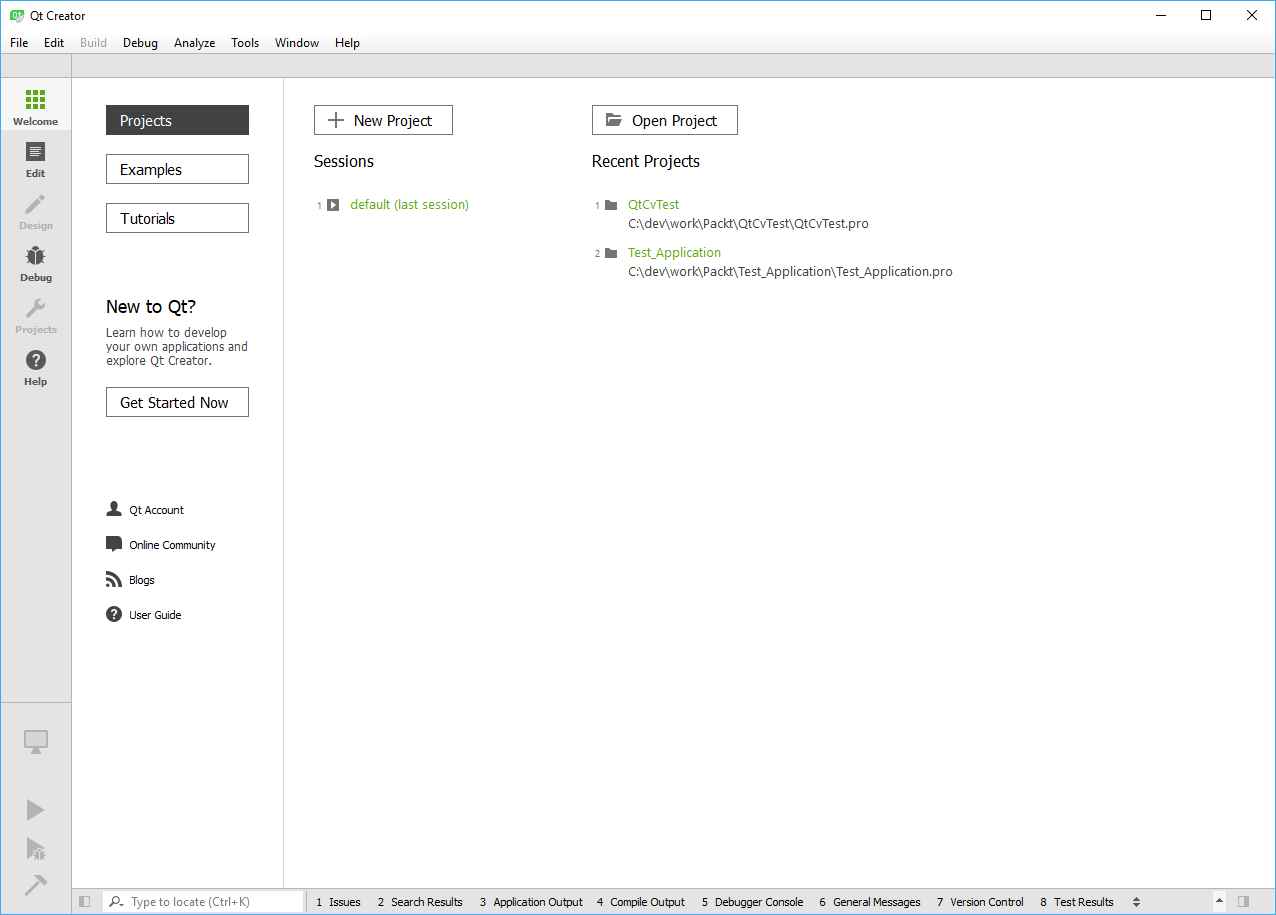Qt Creator is not the same thing as the Qt framework. Yes, that's right; it is just an IDE created by and for the Qt framework. This is what confuses many people who are somewhat to these terms. So, what does that really mean? In a very basic definition, it means you can use Qt Creator or any other IDE to create Qt applications. At some point, when the Qt framework became rich with classes and functions, the people responsible for Qt decided to create an IDE using the wonderful Qt framework itself, and, voila! An IDE free from the operating systems and C++ compiler types was born. Qt Creator is an IDE that supports better integration with the Qt framework, it's open source (which basically means you can use it for free), it's cross-platform, and it includes almost all the tools required from an IDE. Here's a screenshot of the Welcome mode in Qt Creator:

Note that we'll necessarily use all of the Qt Creator features, but it's a good idea to know what it's capable of before...



